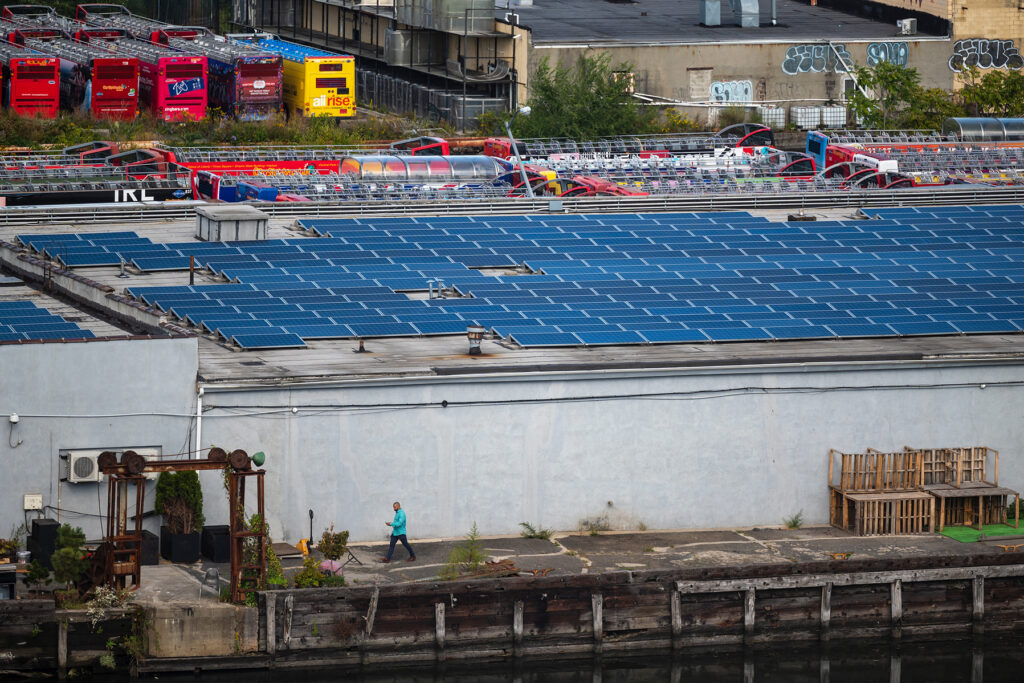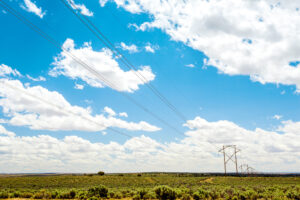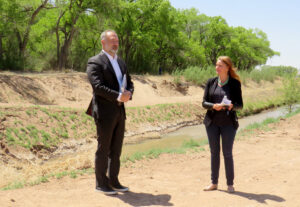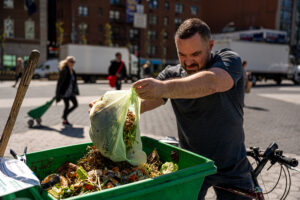Lights Out Feared for NYC New Community Solar Projects as State Credits Fade

New York is primed to soak up the sun, but the city’s ability to hit its solar-power targets could be in jeopardy.
Tens of millions of dollars in incentives from the state that helps make city-friendly “community solar” developments economically feasible are about a month away from sunsetting for new projects. And that’s threatening clean energy projects on tap for the city — along with the local jobs and energy savings that come with them, solar industry reps say.
The solar industry contends that Gov. Kathy Hochul’s recently expanded solar development goals — from six gigawatts by 2025 to 10 by 2030, enough to power almost 1.7 million homes — won’t necessarily help the five boroughs unless the credit gets replenished.
With community solar, tenants purchase sun-generated power that’s not necessarily collected where they live, since they have no say on whether to put panels on their apartment buildings. Energy experts see community solar as a way for lower-income New Yorkers, who can’t afford the high up-front costs of installation, to participate in the clean energy transition.
Community solar is particularly well-suited for the city, where two-thirds of residents are renters. Density and strict fire codes mean space is scarce for everything from rooftop solar panels to large, utility-scale clear energy projects.
Meanwhile, community solar is growing — such projects represented 75% of applications for non-residential solar undertakings in 2020, according to the city.
“Community solar is really starting to get off the ground, and there’s a lot of room for growth,” said Susanne DesRoches, deputy director for infrastructure and energy in the Mayor’s Office of Sustainability and Office of Resiliency.
“We feel like we’re right at the beginning of something that could be expanded and multiplied throughout the city,” she added. “We just have to have the right programs and the right incentives in place in order to be able to do that.”
‘Important Incentive Mechanism’
In April 2019, the state Public Service Commission authorized the community credit, which provides a subsidy for energy generated from community solar projects in Con Ed’s territory, which includes New York City and Westchester.
The program covers 350 megawatts of community solar projects in total — coming to about $68 million annually, according to the state Department of Public Service. The projects can collect the credit for 25 years.
Con Ed estimates that about 9,000 customers receive 28 megawatts of power from 250 community solar installations in its service area, and more are coming online.
But there are just five megawatts’ worth of the community credit left for new solar projects to reserve — enough to support projects for only about another month, according to an estimate by Shyam Mehta, the outgoing executive director of New York Solar Energy Industries Association.
He called the credit the “most important incentive mechanism” for fostering community solar in the city, where residents have access to about a tenth of the sun-powered community projects of the rest of the state.
“Pretty much developers have stopped developing new community solar projects in New York City because they don’t know whether there is going to be any future incentive support,” Mehta said. “Without that incentive support, the economics of community solar just don’t pencil out right now in New York City.”
Without the credit, the value of solar will be cut in half, developers warn. They say it’s already hard to develop solar in the boroughs: Unlike sprawling areas upstate, the city’s solar projects tend to be smaller and more expensive, given the price of labor and trucking equipment into the city. Costs to get customers on board are high.
Part of why the credit is nearly spent is because nearly 170 megawatts’ worth went to gas-powered fuel cell projects, such as a 12-megawatt project by Daroga Power that encompasses 48 fuel cells around New York City. In mid 2019, the PSC prevented any more fuel cell projects from benefiting from the community credit to ensure the incentive went to solar projects.
‘Projects Are Worthless’
The Mayor’s Office of Sustainability, Office of Resiliency, NYCHA and the city Economic Development Corporation petitioned the Public Service Commission early this year to replenish the incentive to make up for the amount allocated to fuel cell projects, and plan for a successor program.
James Denn, a PSC spokesperson, said an upcoming report about the future of solar will address “issues related to the New York City allocations.” The report is slated to be released for public comment sometime this fall, with decisions expect to be made early next year.
Until then, the local solar industry remains in limbo.
“Either we extend a successful program and make sure we’re supporting that segment, which is so critical to achieving our equity goals and our clean energy policies, or we don’t, and we sort of suffer the consequences,” said Noah Ginsburg, a director at the environmental nonprofit Solar One, which helps facilitate solar developments in underserved communities and offers job training.
New York City is aiming to install enough solar panels on public properties to generate 100 megawatts of energy by 2025. So far, the city has put in just 14 megawatts’ worth of panels, according to the mayor’s management report.
Solar panels on private properties in the city can generate 285 megawatts of solar so far — which will help the city achieve its overall goal of 1,000 megawatts by 2030.
“You’re not going to be able to hit these goals without these kinds of incentives, particularly in places like New York City, where development is incredibly expensive and complex,” said Matt Russotti, president of the development company Sol Purpose. “Nowadays, the projects are worthless.”
NYCHA offers its roofs for community solar developments, but the program is at risk without the state credit.
“The community credit is overall an important part of ensuring NYCHA can meet its goal to install 30 megawatts of community shared solar on its buildings,” said Rochel Leah Goldblatt, a spokesperson. NYCHA is about a tenth of the way to that goal.
‘An Incredibly Hard Task’
Sol Purpose developed the recently completed project at the Queensbridge Houses. At 1.8 megawatts and spanning over 27 buildings, it’s the largest community solar project atop public housing in the country. The company says it hired 13 formerly unemployed NYCHA residents to work on the project, five of whom live at Queensbridge.
Sol Purpose also pays the city to lease the roof space, and the revenue — millions of dollars over 25 years, Russotti said — goes toward improving the buildings.
Russotti’s firm was in the process of developing two more megawatts of community solar with NYCHA, but the company had to rework the development timeline: cutting corners and spending more money to lock in the credit before it ran out.
The uncertainty about the credit is causing a chilling effect for developers like Russotti, who say they are reluctant to put resources into new projects.
Con Ed data of applications for community solar projects through August doesn’t show a slow-down yet. Shyam said the numbers likely reflect the rush to grab what’s left of the credit, and he expects to see plummeting rates in the coming months.
Brock Gibian, director of development at Brooklyn-based Ecogy Energy, said every day his company is turning down would-be customers and won’t take on new projects in New York City unless the community credit is extended. One community solar project at risk is planned for the roof of the St. Charles School on Staten Island. The leasing revenue from the project would help fund a new roof, Gibian said.
“If anyone thinks that Con Ed is going to be able to decarbonize, just talk to a developer like me trying to build a solar project in Westchester or the boroughs,” Gibian said. “It’s an incredibly hard task to achieve, and that’s with the current economics of the community credit. If the community credit goes away, we simply cannot make a single project work.”
‘Profound’ Possibilities
Industry experts and Con Ed have warned that the scarcity of space limits New York City’s overall capacity for solar — with or without state subsidies.
The state legislature this summer passed a bill that would allow cross-utility crediting, so that customers of one utility may subscribe to a community solar project in another utility’s territory.
The bill, which awaits Hochul’s signature, would require some technical coordination to make it work on the backend. But the New York Solar Energy Industries Association estimates it would allow about half a million more people to access community solar.
Jamie McShane, a Con Ed spokesperson, noted the utility’s support for the state’s plans for offshore wind plans, energy storage and transmission lines that bring clean power from places as far as upstate and Canada down to the city.
But while transmission lines — like the two Hochul is supporting — can transport solar power into the city, the boroughs won’t reap ancillary benefits like jobs without local investments in harnessing the sun’s energy.
“There are so many barriers to doing solar in New York City but the benefits are off the chart,” said Stephen Roundtree, northeast director of advocacy organization Vote Solar. “It’s the most efficient way of making electricity in New York City.”
In addition to the health outcomes that result from avoiding breathing toxins that spew from gas-fired plants, customers can save about 10% on their energy bills.
In-city solar can provide jobs for people, too. NYCHA’s program has trained about 45 people, with 25 of those hired to work on projects on public housing properties and 10 staying on with installers permanently.
“That can really change people’s economic situation in a more profound way than it does elsewhere,” Roundtree said.
‘An Equitable Market’
In Sunset Park, 150 customers will see a 15% discount on their electricity bills next year when a community solar project developed by UPROSE, Solar One, Co-op Power, 770 Electric Corp., and Resonant Energy atop the Brooklyn Army Terminal goes online.
At 685 kilowatts, the development’s capacity is more than three times as large as the median community solar project. The installer, 770 Electric, has said it will hire at least six community members to work on the project.
The developers secured the community credit as part of the financing, which is part of what made the project possible, said Summer Sandoval, UPROSE’s energy democracy coordinator.
“We don’t want Big Oil to become Big Renewable Energy,” Sandoval said. “We have to create an equitable market for local energy that is going to be centered on, how do we move both public and private investment and resources to frontline community projects?”
The question is key as the state moves to decarbonize its electric sector by 2040, ensuring that disadvantaged communities receive 35% of benefits, as the state’s emissions slashing law, the Climate Leadership and Community Protection Act, mandates.
This article was originally posted on Lights Out Feared for NYC New Community Solar Projects as State Credits Fade







